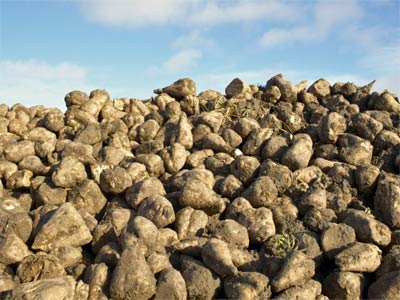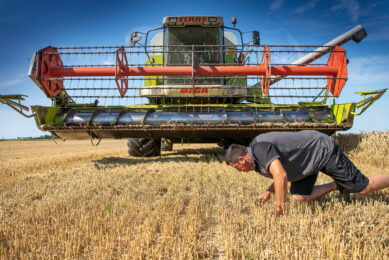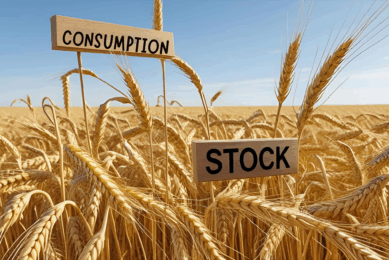Research: Ensiling properties of sugarbeets with dry feedstuffs

Scientists at North Dakota State University conducted a study to evaluate the ensiling characteristics of chopped sugarbeets with dry feedstuffs and the corresponding change in the nutritive composition of the silages with the addition of dry substrates.
Pre-calculated amounts of each feedstuff were weighed individually to achieve desired proportions of each silage product and thoroughly mixed for 5 min.
After mixing, the silage was distributed evenly into three 19-L buckets and sealed to provide an anaerobic environment.
The treatments for this study were designed to determine the effects of DM level and source of dry feedstuff on the ensiling properties of sugarbeets following a 42-d fermentation period.
Treatments were ensiled sugarbeets alone (250 g/kg) or based on
(1) formulated silage DM concentrations of 275, 350, 425, and 500 g/kg and
(2) the inclusion of dry feedstuffs (alfalfa hay, dry-rolled corn, wheat middlings, and wheat straw).
Results
Fermentation and nutritive characteristics of ensiled sugarbeets were influenced with the addition of dry substrates.
A linear increase in silage pH was observed with the addition of alfalfa, dry-rolled corn, wheat middlings, and wheat straw to ensiled sugarbeets.
Lactic acid increased with the addition of wheat middlings. Alfalfa addition to sugarbeet silage did not alter lactate concentration.
Concentration of lactate decreased when corn was added, while wheat straw addition did not influence lactate.
A contrast was used to compare ensiling characteristics of sugarbeets alone (250 g/kg DM) to 350 g/kg DM (sugarbeets with dry substrates).
Results indicated fermentative parameters were altered; pH increased for all dry substrates while lactate was lower for the sugarbeets ensiled with dry-rolled corn compared with sugarbeets ensiled alone.
Alfalfa, wheat straw, and wheat middlings decreased while dry-rolled corn did not affect in vitro DM digestion.
These results indicate the inclusion of dry feedstuffs with sugarbeets altered fermentation and with the exception of corn, decreased in vitro DM digestion.
Nutrient composition and DM content of ensiled sugarbeets was altered with the addition of dry substrates.











